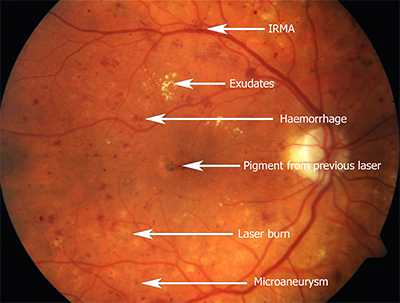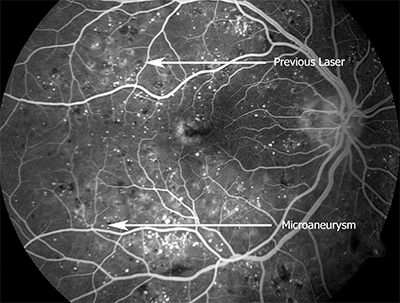Laser is essentially a destructive procedure which places burns on parts of the retina which are not absolutely critical to function (ie the fovea) in order to protect other areas that are (ie the fovea).
For macular oedema, the laser is applied either to the microaneurysms themselves or in a grid-like fashion to the whole of the macula affected by leakage. The rationale for this is that laser causes the local release of cytokines which reduce inflammatory changes associated with retinal oedema. This is a picture of fundus from a patient who has had some laser, showing small areas of pigmentation corresponding to previous laser treatment.
In the the fluorescein angiogram of the same patient, the areas of pigmentation are seen as dark dots where the fluorescence generated by the layer behind the retina (choriocapillaris) has been blocked.
In patients with proliferative diabetic retinopathy, the laser is thought to destroy retina, thereby preventing the ischaemic retinas production of cytokines such as VEFG (vascular endothelial growth factor) which cause new blood formation. A lot of laser needs to be applied in such circumstances and frequently it needs to be repeated.



